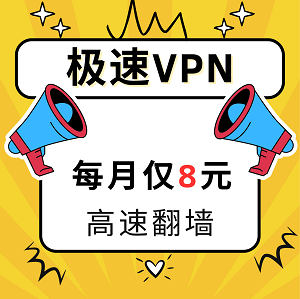目录
什么是v2ray配置JSON文件
v2ray是一款功能强大的代理软件,它的配置文件采用JSON格式。v2ray配置JSON文件包含了软件的各项设置,如入站/出站代理、路由规则、传输协议等。通过修改这个JSON文件,用户可以灵活地定制自己的代理方案。
v2ray配置JSON文件的结构
配置文件概览
一个典型的v2ray配置JSON文件包含以下主要部分:
"log": 日志相关配置"api": API相关配置"dns": DNS相关配置"routing": 路由规则配置"policy": 访问策略配置"inbound": 入站代理配置"outbound": 出站代理配置"transport": 传输层配置"stats": 统计相关配置"reverse": 反向代理配置
核心配置项
"log": 日志相关配置,包括日志级别、输出方式等。"inbound": 入站代理配置,定义了接收流量的方式和端口。"outbound": 出站代理配置,定义了发送流量的目标和方式。"routing": 路由规则配置,决定流量如何在入站和出站之间路由。
inbound配置
"inbound"配置项定义了v2ray接收流量的方式,主要包括以下内容:
"port": 监听端口"protocol": 入站协议,如socks、http、vmess等"settings": 协议相关的具体配置
outbound配置
"outbound"配置项定义了v2ray发送流量的目标和方式,主要包括以下内容:
"protocol": 出站协议,如freedom、blackhole、vmess等"settings": 协议相关的具体配置"streamSettings": 传输层配置,如tcp、kcp、ws等
routing配置
"routing"配置项定义了v2ray的路由规则,决定流量如何在入站和出站之间路由,主要包括以下内容:
"rules": 路由规则列表"domainStrategy": 域名解析策略
其他配置项
"dns": DNS相关配置,包括服务器地址、域名解析策略等。"policy": 访问策略配置,可以对不同用户设置不同的访问限制。"stats": 统计相关配置,可以开启流量统计功能。"reverse": 反向代理配置,可以将v2ray作为反向代理使用。
v2ray配置JSON文件示例
基础配置
{ “log”: { “loglevel”: “warning” }, “inbound”: { “port”: 1080, “protocol”: “socks”, “settings”: { “auth”: “noauth”, “udp”: true, “ip”: “127.0.0.1” } }, “outbound”: { “protocol”: “vmess”, “settings”: { “vnext”: [ { “address”: “example.com”, “port”: 443, “users”: [ { “id”: “b831381d-6324-4d53-ad4f-8cda48b30811”, “alterId”: 64 } ] } ] }, “streamSettings”: { “network”: “ws”, “security”: “tls” } }, “routing”: { “rules”: [ { “type”: “field”, “ip”: [ “geoip:private” ], “outboundTag”: “direct” }, { “type”: “field”, “domain”: [ “geosite:category-ads-all” ], “outboundTag”: “block” } ] }}
进阶配置
{ “log”: { “loglevel”: “warning” }, “api”: { “tag”: “api”, “services”: [ “HandlerService”, “LoggerService”, “StatsService” ] }, “stats”: {}, “inbound”: [ { “port”: 1080, “protocol”: “socks”, “settings”: { “auth”: “noauth”, “udp”: true, “ip”: “127.0.0.1” } }, { “port”: 8080, “protocol”: “http”, “settings”: { “timeout”: { “handshake”: 4, “connection”: 300 } } } ], “outbound”: { “protocol”: “vmess”, “settings”: { “vnext”: [ { “address”: “example.com”, “port”: 443, “users”: [ { “id”: “b831381d-6324-4d53-ad4f-8cda48b30811”, “alterId”: 64, “security”: “auto” } ] } ] }, “streamSettings”: { “network”: “ws”, “security”: “tls”, “wsSettings”: { “path”: “/app” } }, “proxySettings”: { “tag”: “proxy” } }, “inboundDetour”: [ { “port”: 10085, “listen”: “127.0.0.1”, “protocol”: “dokodemo-door”, “settings”: { “network”: “tcp,udp” }, “tag”: “api” } ], “outboundDetour”: [ { “protocol”: “freedom”, “settings”: { “domainStrategy”: “UseIP” }, “tag”: “direct” }, { “protocol”: “blackhole”, “settings”: { “response”: { “type”: “http” } }, “tag”: “block” } ], “routing”: { “strategy”: “rules”, “settings”: { “domainStrategy”: “AsIs”, “rules”: [ { “type”: “field”, “ip”: [ “geoip:private” ], “outboundTag”: “direct” }, { “type”: “field”, “domain”: [ “geosite:category-ads-all” ], “outboundTag”: “block” }, { “type”: “field”, “user”: { “email”: [ “admin@example.com” ] }, “outboundTag”: “api” } ] } }}
v2ray配置JSON文件常见问题解答
如何设置多个入站/出站代理?
在"inbound"和"outbound"配置项下,可以添加多个对象,每个对象代表一个入站或出站代理。例如: “inbound”: [ { “port”: 1080, “protocol”: “socks”, “settings”: { “auth”: “noauth”, “udp”: true, “ip”: “127.0.0.1” } }, { “port”: 8080, “protocol”: “http”, “settings”: { “timeout”: { “handshake”: 4, “connection”: 300 } } } ]
如何启用TLS加密?
在"outbound"的"streamSettings"配置项中,将"security"设置为"tls"即可启用TLS加密。同时需要在"settings"中配置证书相关信息: “streamSettings”: { “network”: “ws”, “security”: “tls”, “tlsSettings”: { “serverName”: “example.com”, “certificates”: [ { “certificateFile”: “/path/to/certificate.crt”, “keyFile”: “/path/to/private.key” } ] }}
如何配置分流规则?
在"routing"配置项的"rules"列表中,可以添加各种分流规则,例如根据IP地址、域名等进行分流: “routing”: { “rules”: [ { “type”: “field”, “ip”: [ “geoip:private” ], “outboundTag”: “direct” }, { “type”: “field”, “domain”: [ “g

